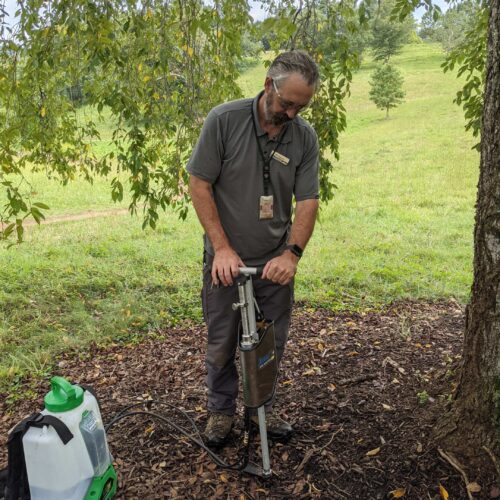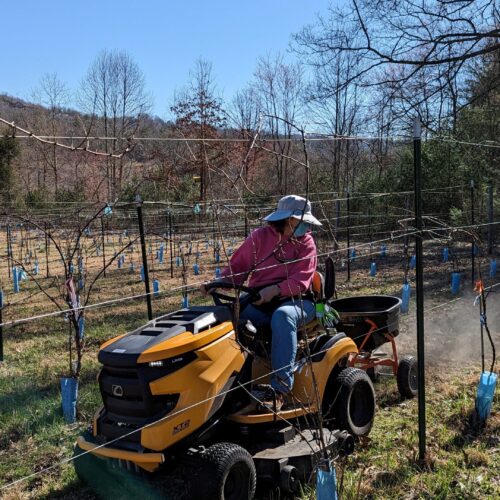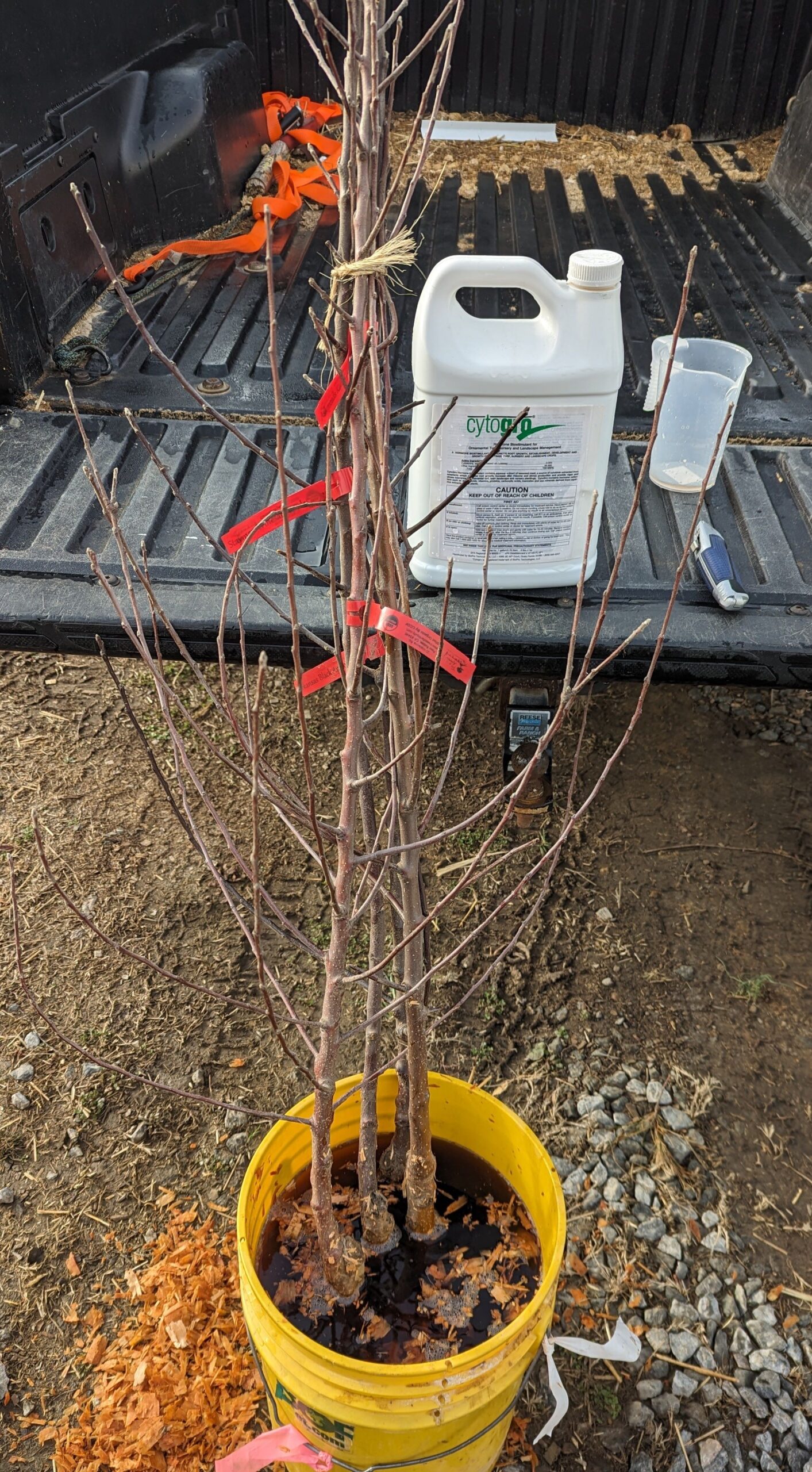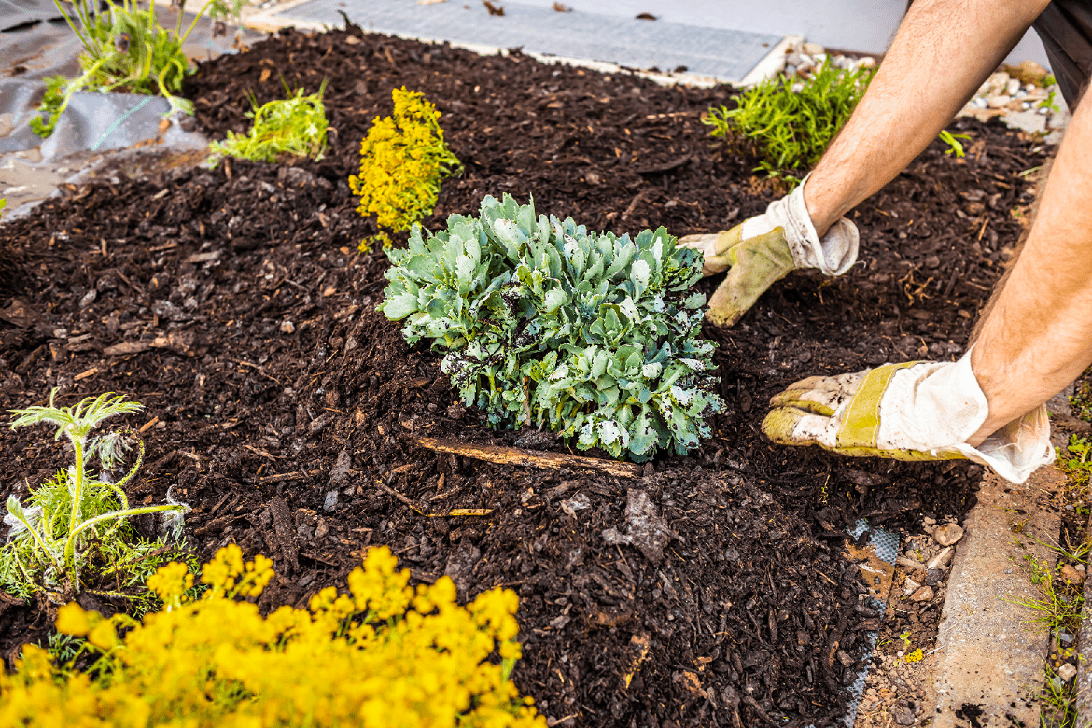There is a dizzying choice of fertilizers and amendments on the market. What do you choose and when do you apply them? To keep things relatively simple, I will limit this installment to tree and shrub care only. In a future blog, we’ll discuss applications to the vegetable and flower garden.
To start with, well, start with a soil analysis. You ought to know what the soil pH is and what the mineral availability of the soil is. Take soil samples from across your plot, discarding the top (organic matter) layer. The non-woody absorbing tree roots range from 6 to 12 inches deep, in many soils. This is the layer that you want to test. You can buy a do-it-yourself soil test kit or send the sample out for analysis.
Why test for pH? Soil pH will help to determine the availability of minerals in the soil. If the soil has a very low pH (5.0), many of the macronutrients (N, P, K, Ca, Mg) become limiting; if the pH is high (8.0), the micronutrients (Fe, Mn, Zn, B, Cu) become limiting. It is also important to know the soil texture. In the extremes, they can be sandy or clayey. Sandy soils are prone to drying and do not hold onto nutrients well, whereas clayey soils tend to be wet and slow to drain, but hold onto nutrients well. Apart from the physical chemistry, get an analysis of the organic matter content of the soil. Organic matter buffers against pH extremes, is key to creating soil aggregates, thereby opening the soil to water infiltration and gas exchange. It also improves the nutrient holding capacity of the soil.
Basics of Applications
When planting or maintaining trees, it is a good idea to add a 1 or 2 inch layer of compost around the tree, and mulch with a 4-6 inch layer of woodchips. Both will help to build organic matter. Keep both away from the stem of the tree.
A handy rule of thumb is to add fertilizer spring and fall, and to add soil amendments (particularly liquids) in the summer months. Fertilizers come both in liquid and dry forms, as do amendments. Which should you use? In part, it depends on the application equipment you have on hand. If you have a few trees or shrubs to fertilize, you can make the applications with a watering can. Simply fill the watering can to half volume, add the recommended amount of liquid fertilizer, then bring up to the full volume. Newly planted trees and older (senescent trees) do not necessarily need a lot of nitrogen. Therefore, select a fertilizer with a low nitrogen value, such as a 2-2-3 or a 3-3-3.
These three numbers designate the percent of nitrogen, phosphorous and potassium, respectively, the major plant nutrients.
If you would like increased growth in a young, established tree, select a fertilizer with a higher nitrogen value, such as the 5-3-2 Bio MP. In addition to adding NPK, Bio MP has a carbohydrate component designed to support the soil microbial flora. Older trees benefit from liquid applications that are applied using a soil injector. Injecting into the root zone has a number of benefits including making applications near the absorbing roots, and reducing or eliminating run-off.

Granular fertilizers are readily applied with a drop or broadcast spreader. The best benefit of applying a granular fertilizer is that you are less likely to cause burn or injury to a plant. Some granulars need to be acted upon by microbes to break down complex forms into simpler ones before they become useful to plants (an example is urea formadelhyde, the nitrogen source in some granulars); all need to be solubilized in water to become active. In effect, granular fertilizers are slow release, and are advantageous to supplying macronutrients to plant roots over time.
Always follow label directions when making a granular application. Most benefit from watering in after application to aid in solubilizing the nutrients thereby increasing their plant availability. One word of caution: whether using liquid or granular fertilizers, do not apply when applying lime. The interaction of lime and a complete fertilizer can potentially volatilize nitrogen, reducing fertilizer efficacy. Make the two applications at least 30 days apart.

Granular fertilizers are ideal for use as a backfill amendment when vertical mulching or air knifing under the tree canopy to alleviate compaction. Dry amendments are easily incorporated into the backfill. Always read the label guidance on how much to apply. Generally, amendments that have a low nitrogen value including biochar and composts are added in at 10% by volume.
Granular fertilizers may also be used in newly planted beds. Prior to planting broadcast the granular over the area you intend to plant, then simply dig and install your landscape planting. This technique is useful in mixed tree, shrub and flower bed plantings.
In addition to composts and woodchips, there are some very good granular or dry amendments that support plant health, and do not necessarily result in a copious growth response (excess nitrogen could result in lush growth, which increases plant susceptibility to insect pests and disease). This group includes the bio-stimulants, which are based on seaweed and seaweed extracts, and humic acids, derived from Leonardite ore.
Seaweed
Intertidal seaweed, such as Ascophyllum nodosum is constantly exposed to extreme environmental stresses of alternatively flooding and exposure to drying. To survive the environmental extremes of the intertidal zone, the seaweed produces protective substances including polyphenols and carotenoids, and is a source of minerals and organic acids. In addition, A. nodosum is considered to be a plant biostimulant, regulating phytohormone biosynthesis in plants (including auxins, gibberellins and cytokinins – all plant growth regulators). When applied to plants, seaweed extracts improve root development and stress tolerance, including salinity stress, drought stress, freezing stress and induce plant defense. These benefits are particularly advantageous for new (non-established) plantings and to protect existing plants from temperature extremes, drought, and other environmental stresses.

Humic Acid
Humic acids are the natural by-product of the composting of organic matter in the soil. Humic acid may be added to soil, for example, as solubilized Leonardite ore, a carbon source. Humates have a very high cation exchange capacity (CEC). That is, humic acids hold positively charged ions such as potassium, calcium, magnesium, iron, manganese, zinc and other minerals. This effect allows nutrient chelation that increases their plant availability. The high carbon stimulates microbial activity, which in turn, improves mineral availability.
Both seaweed and humic additions can be done at any time of year. They are particularly good choices during the summer months to aid plants during periods of drought stress. In such cases, liquid additions may be advisable as the plant will benefit from added water. Examples of liquid humic acid and seaweed are EnviroPlex and SeaXtra.
Carbon: Nitrogen ratios and the Microbial Community
Healthy soils have carbon to nitrogen (C: N) ratios that support soil microbiology. A carbon to nitrogen ratio in the range of 25 to 40 is beneficial to soil microbes. A low C: N ratio has been associated with a decrease in soil microbial respiration. Soils deficient in organic matter or have a low C: N ratio demineralize nitrogen from the soil. In general, the abundance of the microbial community is related to the organic matter content of the soil. Start with a soil analysis that includes percent organic matter and percent nitrogen. If organic matter is low or very low as determined by soil analysis, you may consider the additions of a carbon source. This can take the form of compost, woodchips or fertilizers that supply carbon (the latter in the form of molasses). All will stimulate beneficial soil microbes. Studies have shown that soil applied molasses increased soil microbiological activity.
The soil environment that supports mycorrhizal development is the same as those that support healthy root growth. The kind of organisms present in soils depend on moisture, aeration, organic matter and type of plants present. Practices that reduce compaction, increase infiltration and percolation of water encourage a healthy environment for both microbes and plants. For example, aeration in the root zone can change the microbial community, by increasing the abundance of nitrogen-fixing and potassium-solubilizing micro-organisms, which is conducive to tree growth. The microbial component in the soil helps to support plants in a number of critical ways. These include, bacterial fixing atmospheric nitrogen, and mycorrhizal growth. Soil microbes help to fix nitrogen and solubilize phosphorous in the soil to make them plant available.
The soil has physical, chemical and biological attributes. Keeping the soil healthy, keeps your plants healthy as well. Fertilizers are an important component of a plant health care program, when applied at the right time of year in the correct dose. Always read the package label for application instructions. Select liquid or granular fertilizers based on what is easier for you to apply in your landscape. But don’t forget the bread and butter of soil health: the additions of dry (compost, kelp) and liquid (seaweed and humic acids) organic matter!
In our next installment, we’ll consider companion plants and the beneficial insects they attract to your landscape garden!

